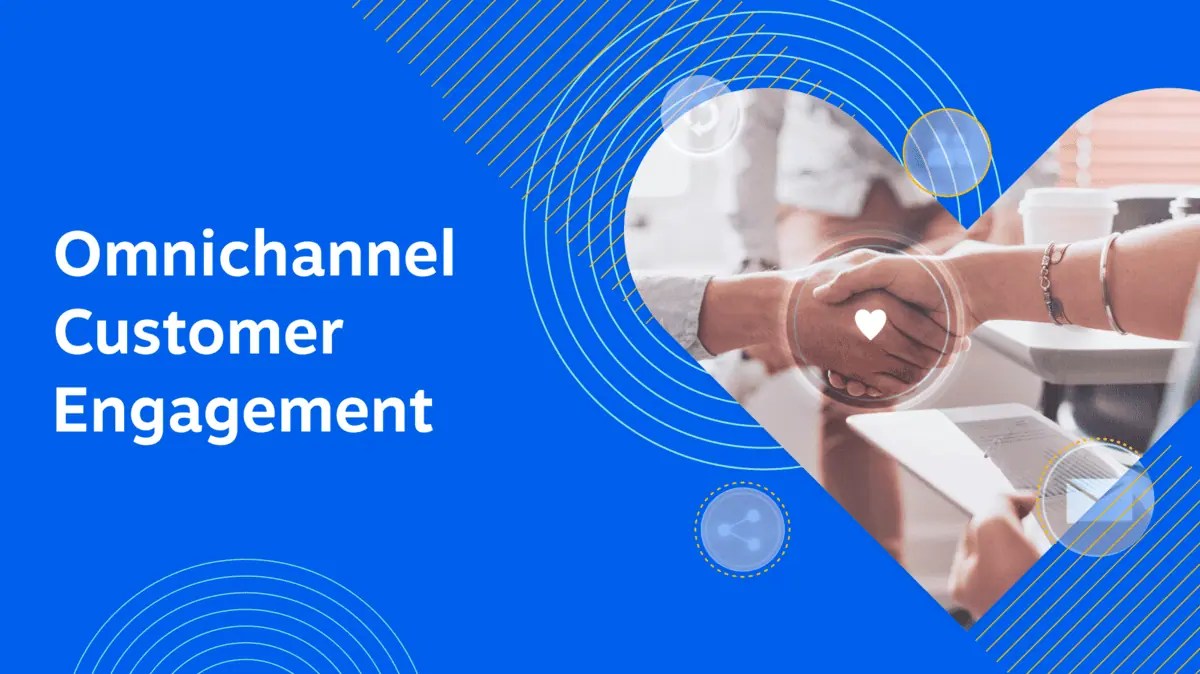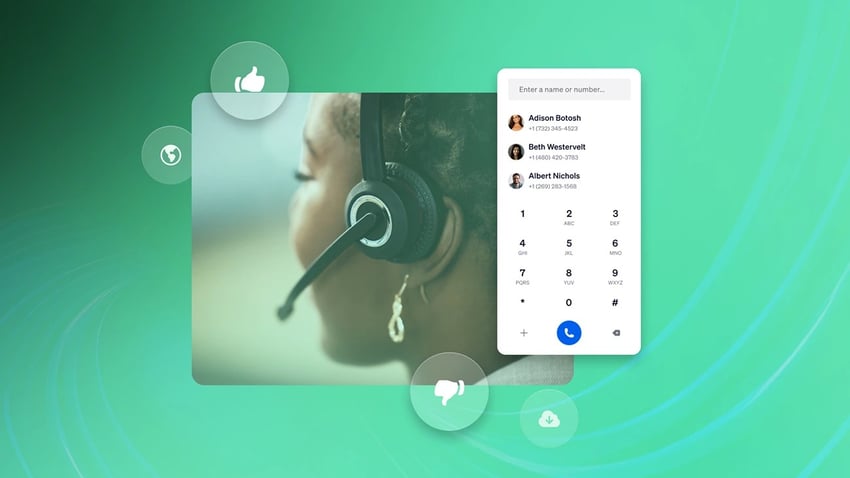If you’re still treating your customer touchpoints as separate engagement channels, you need to do things differently. Smart businesses employ omnichannel customer engagement to power each and every customer interaction and track customer behaviors in one place.
Customers expect convenience, speed, and personalization. They want to feel understood and valued, not like they’re explaining their story for the umpteenth time. Omnichannel customer engagement is how businesses meet these expectations, building loyalty and satisfaction.
In this guide, we’ll go over the benefits and challenges of omnichannel customer engagement, how to create your omnichannel strategy, and best practices for when you’ve got it up and running.
What Is Omnichannel Customer Engagement?
Omnichannel customer engagement means unifying your brand messaging and voice across all communication channels to deliver a consistent and personalized experience throughout the customer journey.
Customers can interact with your organization through various channels, such as email, phone, chat, social media, and in-person, and still receive the same level of service and support as if they were engaging with your brand at a single touchpoint.
Key elements of omnichannel engagement include:
- Consistency: Messaging and branding stay the same across all channels.
- Continuity: Each customer interaction picks up where it left off, regardless of channel.
- Integration: Systems like CRM, contact center software, and marketing platforms share data to give call agents a full view of the customer journey.
- Customer Choice: Customers can interact on their preferred channel, switching as needed.
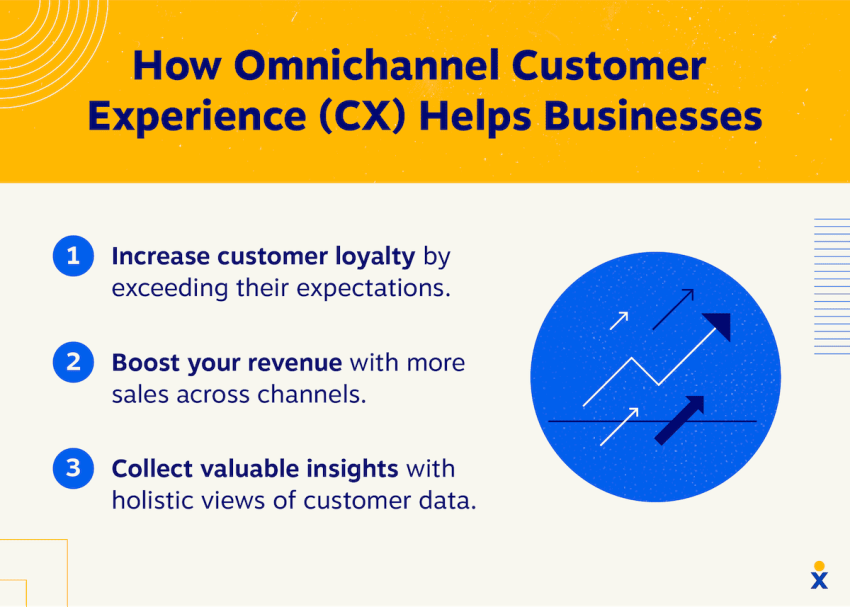
Why you need a strategy for omnichannel customer engagement
When organizations approach channels in isolation, they’re in danger of alienating customers and potential customers at every point of the journey:
- Fragmented experiences. Customers are forced to repeat information each time they move from chat to phone or from email to social. This creates frustration and increases churn risk.
- Operational waste. Without shared context, agents spend more time gathering history than solving problems. Supervisors struggle to allocate resources wisely since reporting is scattered across platforms.
- Inconsistent service. Messaging and policy may vary by channel, which undermines brand reliability and might even create compliance risks in regulated industries.
- Overlooked opportunities. Valuable data stays locked in silos, preventing managers from spotting patterns, anticipating needs, or using this data for improvement.
Basically, the lack of an omnichannel approach doesn’t just inconvenience customers—it can actually slow performance, damage brand loyalty, and limit a contact center’s ability to evolve.
5 companies that use an omnichannel customer engagement strategy
Use cases for omnichannel customer engagement can be found in all sorts of industries. Here are a few examples of real companies that are successfully using omnichannel customer engagement strategies:
- Disney: Offers a seamless experience like mobile trip planning, in-park apps to find rides and restaurants, and Magic Bands that act as room keys and food ordering devices, all of which create a highly connected guest experience in an otherwise chaotic situation.

- Starbucks: Integrates each physical store with their website, social media, and mobile app on which you can order ahead, customize your order, and send digital gift cards. The app also has a reloadable loyalty card program that’s accessible across all their channels.

- Sephora: The beauty retailer connects customers’ online and in-store shopping with digital tools like in-store tables that access online baskets and virtual try-on software. This way you can “try on” different cosmetic products in the privacy of your own home, and then order online or in the physical store. They also have a convenient customer support live chat function.

- IKEA: Uses its website, app with augmented reality, and live chat to seamlessly integrate online and in-store shopping. The AR function means that customers can see what a specific piece of furniture will look like in their home before ever walking into a store.
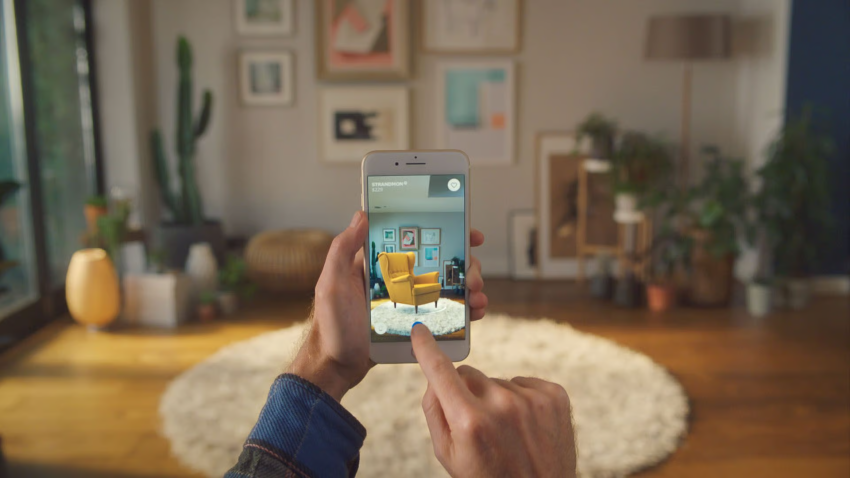
- Bank of America: Employs a dynamic omnichannel strategy with mobile and desktop apps for transactions, budgeting, and AI-powered chatbot “Erica” for personalized support.

Benefits of Creating an Omnichannel Experience
Investing in an omnichannel customer experience might seem like overkill at first, but doing so will yield several benefits outlined below.
1. Increased customer satisfaction
About 75% of Gen Z respondents (and 44% of all ages) in a TCN Consumer Surveysay that they have shared a negative review online after just one brand experience with bad customer service.
A personalized customer experience is exactly what omnichannel engagement offers. It gives you access to up-to-date insights about customer preferences and behaviors across multiple channels simultaneously. Armed with this data, you can provide personalized interactions to your customers’ tastes, meet their expectations, and keep them happy.
2. Improved customer loyalty
According to Deloitte, one third of executives in the retail industry plan to invest significantly in omnichannel capabilities. Why? Because omnichannel shoppers spend about one and a half more on a monthly basis than single-channel shoppers.
A loyal customer supports your business and helps you acquire new users through word-of-mouth marketing. They share their experience with your brand on social media and third-party platforms and recommend your product or service to the people in their network.
3. Increased sales and conversions
Omnichannel shoppers have a 30% higher lifetime value than those who shop using only one channel, and companies with extremely strong omnichannel customer engagement see a 9.5% year-over-year increase in annual revenue, compared to 3.4% for weak omnichannel companies.
Personalization is largely responsible for these results. When you run an omnichannel customer engagement engine, you get a bird’s-eye view of customer behavior, preferences, and interactions across all your touchpoints. You can use these insights to craft personalized messaging and product offerings.
4. Improved insights into customer behaviors
Omnichannel customer engagement eliminates the guesswork. Instead of making assumptions about customer behaviors, you see their exact actions at every stage in their journey in real time. You can also uncover trends and patterns in customer behaviors, such as the channels they prefer to interact with.
5. Increased operational efficiency
Omnichannel customer engagement improves operational efficiency in two ways:
- Automates tasks: It uses tools and software to automate time-consuming tasks. Take data collection and analysis, for example. Omnichannel marketing automatically integrates your data sources into one central platform, making it easier to track.
- Closes the information gap: It increases productivity when an organization has a system that unifies its data and makes it easily accessible to everyone. Teams don’t waste time searching for information or reconciling discrepancies.
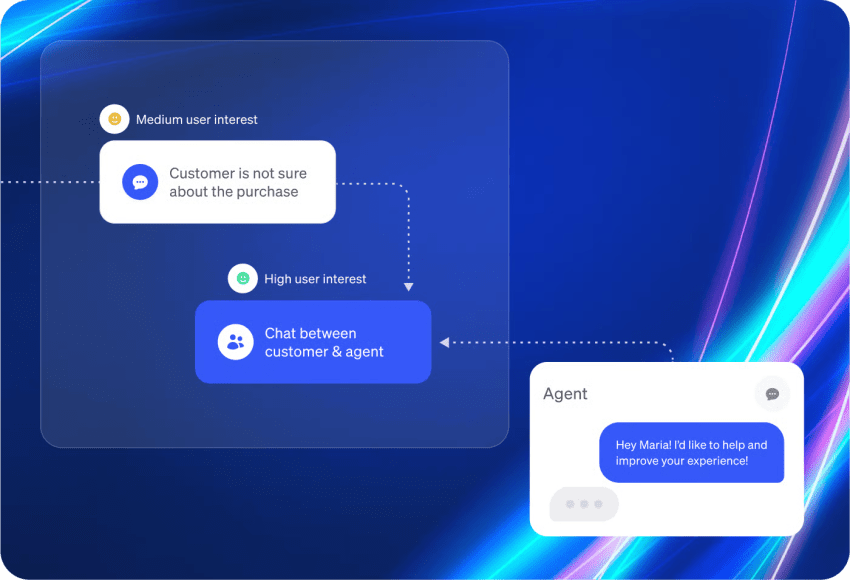
Challenges When Building an Omnichannel CX Strategy
Common challenges a business might face when rolling out an omnichannel customer engagement strategy include:
- Organizational and Planning Challenges: Many businesses rush to adopt technology without proper analysis of needs and processes, but if you don’t have a clear and detailed roadmap, that can lead to wasted budgets and channel conflicts.
- Process Challenges: Apart from an initial roadmap for implementation, you’ll need well-defined processes across departments for managing all your channels. Without these, each team might be using different tools, which means a disconnected customer data view.
- Technology Challenges: Integrating multiple communication channels technology-wise is complex. Many businesses struggle with rigid legacy systems that cannot scale or easily add new functionalities. This causes slow order processing and increased errors, which will frustrate customers who expect a consistent experience (with their data and history) across channels.
- Data Silos: In addition to the new technology your employees are trying to learn, disparate data sources prevent your call agents from getting a comprehensive customer view, making it hard to personalize service.
- Employee Training: Omnichannel contact centers require skilled agents who are trained to handle multiple channels and new technology.
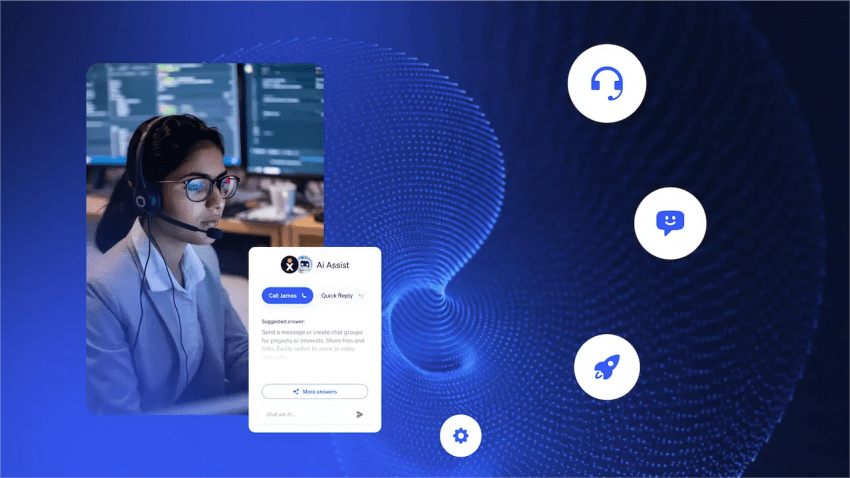
6 Steps to Create an Omnichannel Customer Engagement Strategy
Now that you understand the benefits of creating omnichannel experiences for your customers, here’s how to create an omnichannel engagement strategy that works for your organization.
1. Understand your customers
Customers are the heart of your omnichannel strategy, so you must start with them. Knowing your customers involves more than collecting high-level demographic information — that’s only a tiny part.
To craft a holistic strategy, you need to know where they hang out, what they like to read and do, and what keeps them up at night in relation to the problem you solve.
How do you gather this information?
- Conduct market research: Create a market research survey with Nextiva and administer it to your target audience via digital channels like social media. Offer incentives to encourage participation, such as a free consultation or a premium product subscription for a limited period.
- Conduct competitor research: Analyze your competitors’ marketing strategies to see which channels and pain points they prioritize. Use SEO tools like Semrush and Ahrefs to review their websites and see the keywords they currently rank for.
- Analyze customer data: Dig into your existing customer data to uncover insights and patterns for different customer segments. Analyze website visits, purchase history, survey responses, social media engagement, and other data sources to learn more about customer behaviors across multiple touchpoints.
Once you have all the data, piece it together to create detailed profiles or buyer personas for your customer segments. Each customer profile should include roles, pain points, preferences, and behavioral data.
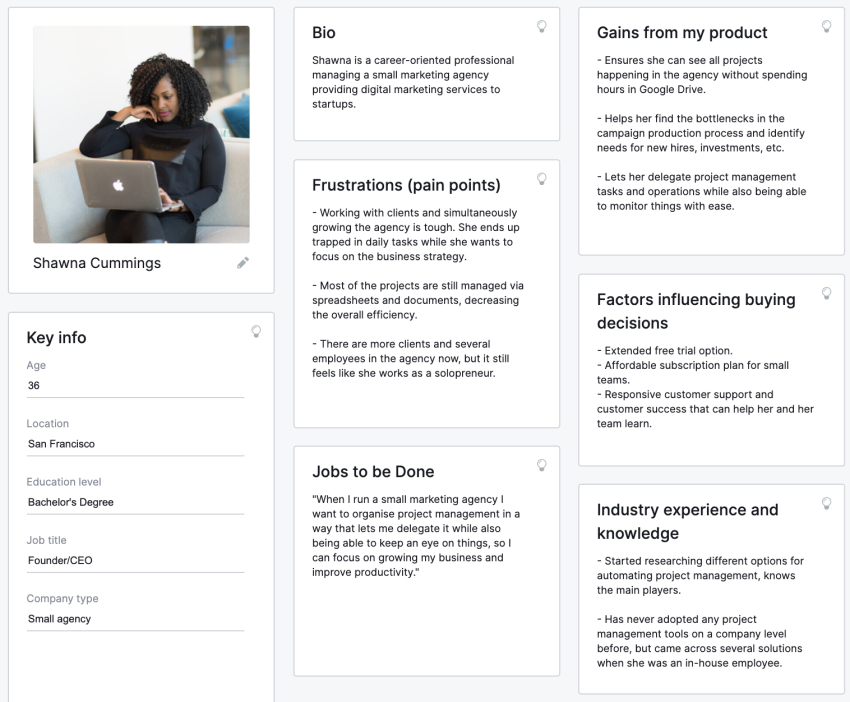
2. Choose your channels
Don’t blatantly copy your competitors’ customer engagement channels. Instead, to reduce friction during interactions, prioritize the channels your customers already use. If your customers have to learn how a new app works just to reach your contact center, it will negatively impact their experience.
If your audience uses a long list of channels, narrow your focus to the ones where they spend most of their time. For instance, if you’re selling to C-suite executives, you’ll want to focus on LinkedIn because that’s where they typically hang out.
Diversifying your channels is also a good practice. Combine digital channels like social media, websites, and emails with traditional methods of communication like phone calls and physical stores. This not only caters to different customer segments but also ensures there are other ways to reach you if one channel is unavailable.
An omnichannel strategy relies on seamless channel integration. Make sure your chosen channels, whether digital or offline, are compatible and work together smoothly. You can sync multiple customer channels on a single platform, like Nextiva.
3. Develop a unified customer view
Data silos are antithetical to omnichannel customer engagement. That’s why you must create one central source of truth for all customer data within your organization.
This process starts with setting up a standard process for collecting customer data across various sources and channels. Specify how often data will be collected and transferred, which tools will be used, and what will happen at the various stages before the data arrives at the endpoint.
Then, integrate all your data sources — from your customer relationship management (CRM) software to your contact center and customer data platform — into a central, well-organized data repository. Enable data sharing across departments so everyone can access relevant customer information.
4. Craft personalized content and offers
A Deloitte report showed that 80% of consumers favored brands that offered a personalized experience and even spent 50% more with these companies.
To deliver personalized experiences, you need to segment your customers based on preferences and behaviors. Segmenting is relatively straightforward if you’ve already created customer profiles or personas.
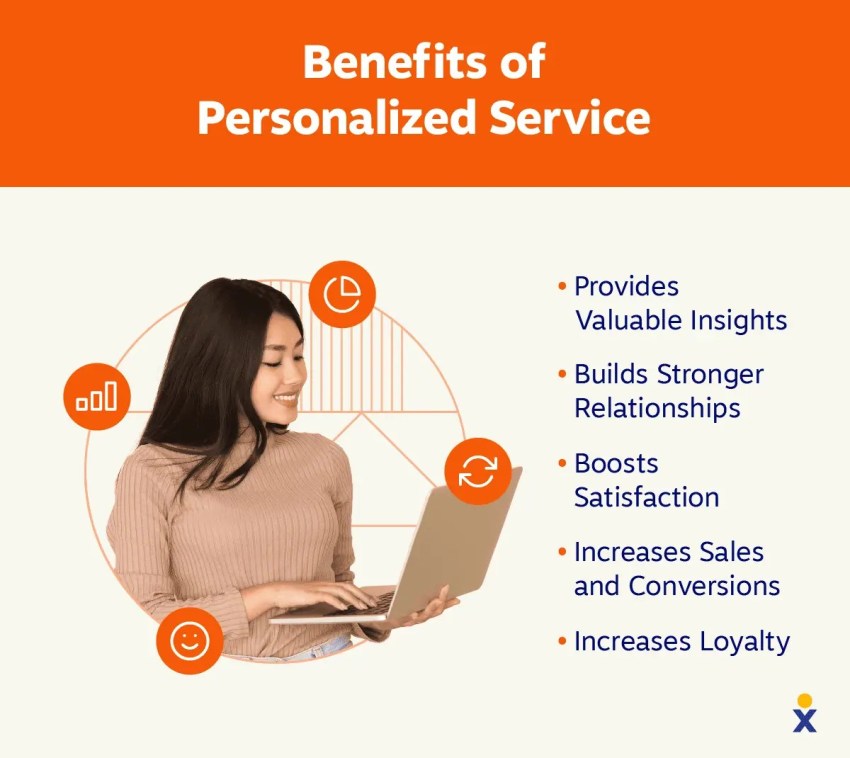
Next, develop unique messaging and offerings for each customer segment. For example, customers with higher spending power will receive prompts to subscribe to your product’s premium plan, while those with lower spending power will receive prompts for the basic plan. Use customer names, purchase histories, and interests in your messaging to personalize communication across all channels.
As customers continuously interact with your channels, you’ll collect real-time behavioral data and use this information to refine personalized messaging and product recommendations.
5. Create seamless customer journeys
Any friction experienced during the buyer journey negatively affects customer acquisition and customer retention. Your business will lose customers (and revenue) if information gaps prevent prospects from completing purchases.
Make it as easy as possible for your target audience to move through various stages of your customer journey. For this, you’ll need a customer journey map: a visual representation of each customer touchpoint with your brand throughout their interactions, from awareness to purchase and post-purchase.
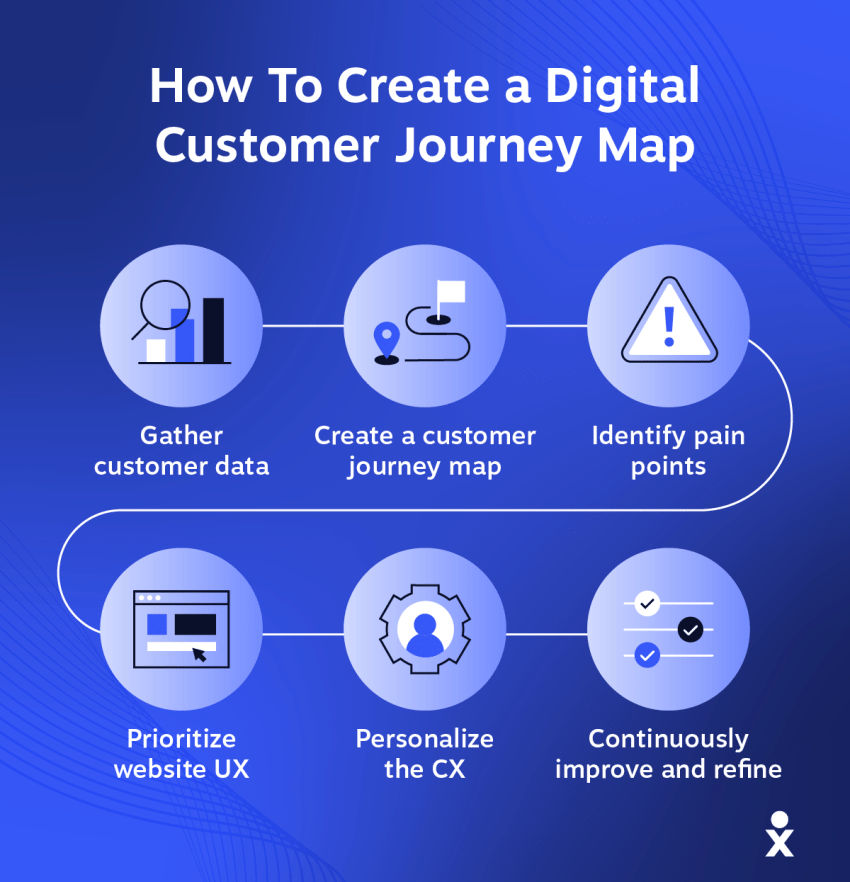
Optimize each touchpoint for a smooth experience. Ensure you provide all the information and cues the prospect or customer needs to seamlessly move to the next stage. For example, in the awareness stage, you should provide educational materials that give the prospect an overview of your product and features, plus a clear call to action to book a demo.
Offer omnichannel support across all stages, allowing prospects and customers to switch between channels seamlessly without losing context.
💡Pro Tip → Nextiva offers real-time suggestions during conversations to help you solve customer problems faster. Try Nextiva now!
6. Measure and optimize
Omnichannel customer engagement isn’t a one-and-done process. You need to continuously track your efforts and processes to see what’s working and what needs improvement. There are several ways to do this, including:
- Run A/B tests for calls to action and messaging to see what resonates best with your audience.
- Collect qualitative customer feedback about their experiences through surveys and one-on-one conversations.
- Measure engagement and conversion rates for each channel. For emails, you can track open and click-through rates. You’ll be able to see this information in your email marketing software.
Why Use an Omnichannel Contact Center?
An omnichannel customer engagement platform powers all your customer communications — from phone calls and emails to SMS — from one central platform.
It helps you:
1. Unify your view
When you manage customer interactions across several platforms, communication can easily slip through the cracks. Customers’ messages are ignored, or they need to follow up on several channels before getting a response. This is not a good look for your organization.
An omnichannel contact center solves this problem by unifying your customer communication channels. This allows you to manage all interactions via a single interface. Support agents can transfer conversations across platforms without affecting the customer experience.
2. Know your customers
Demographic data can tell you where a customer is from and their level of education. But that’s not enough information to help you understand their pain points and preferences or accurately predict their behaviors.
With an omnichannel contact center, you get a complete 360-degree view of the customer to personalize every interaction. You’ll see how customers behave across different channels, helping you uncover trends and patterns for your marketing strategies.
3. Route inquiries smartly
Say goodbye to long call wait times. With an omnichannel contact center, you can automatically match customers to the best-fit agent for faster resolution. You can also route cross-channel conversations.

Let’s say a customer reaches out via email but switches to a phone call. In that case, advanced omnichannel routing transfers the conversation to the right call center agent and shares the email thread to give them context for the conversation. In this way, the customer doesn’t have to explain the issue from scratch when they get on the call.
4. Collaborate in real time
In addition to managing customer interactions, omnichannel contact centers have features for internal collaboration among agents.
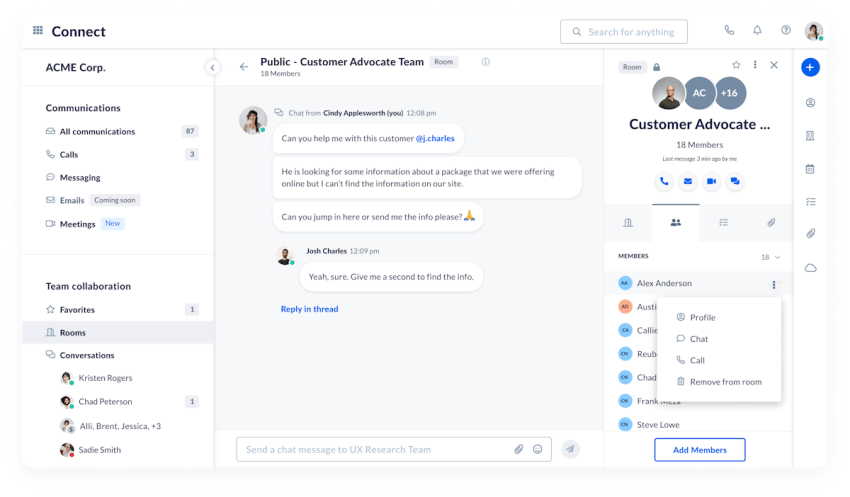
These tools include a knowledge base for troubleshooting customer issues, internal chat systems, presence indicators to see if a colleague is available for assistance, and the ability to transfer or escalate conversations to other agents or departments as needed.
With these tools, it’s much easier for support teams to resolve customer issues together regardless of their assigned channel.
5. Reach out to customers proactively
Get ahead of sales opportunities and churn risks. As the omnichannel contact center tracks customer interactions, it looks for definitive behaviors that indicate a customer is ready to take significant action. Then, it sends a personalized message to the customer while alerting customer service teams.
Here’s what this looks like in practice: A customer has checked out your pricing page three times but never upgraded their plan. Your contact center can send an automatic push notification in the mobile app that reads: “Limited offer; get 50% off all plans for 24 hours.”
6. Empower your self-service
More than 65% of respondents in Microsoft’s State of Global Customer Service Report said they opt to use self-service channels before engaging with a human agent.
Omnichannel contact centers provide knowledge bases and chatbots for self-service. When a customer contacts support via your website, they receive an immediate response from the chatbot.
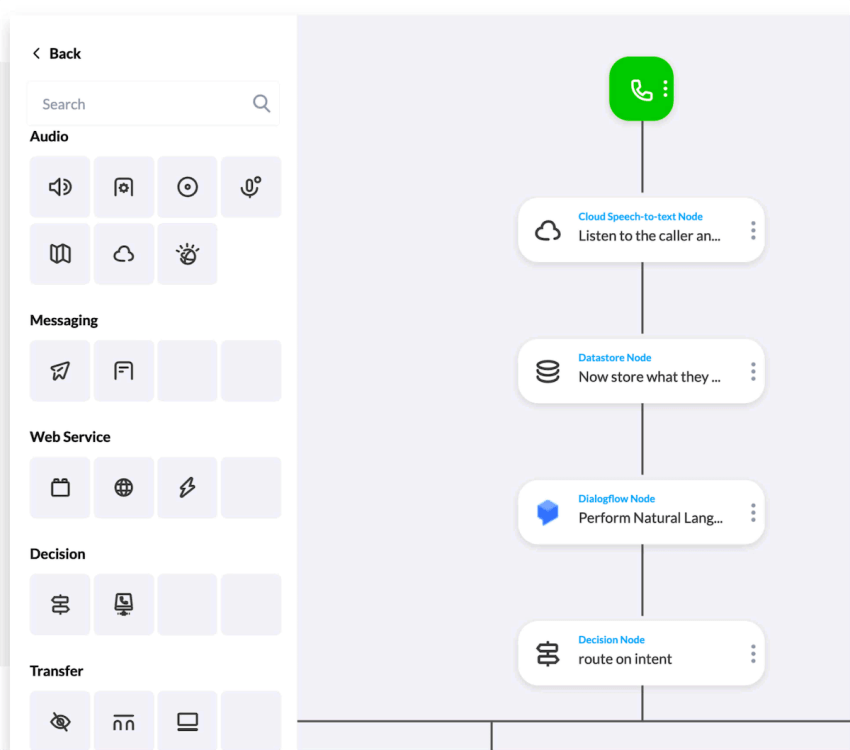
The chatbot asks closed-ended questions and routes the customer to relevant resources in the knowledge base, such as video tutorials and help articles, based on their responses. The customer solves the issue independently without waiting to speak with a human.
7. Connect your systems
Omnichannel contact centers don’t only allow you to integrate customer communication platforms; they also integrate third-party data sources like your CRM and CDP for more customer insights.
Take Nextiva, for example. Our AI-powered cloud contact center syncs with top CRMs like Zoho, HubSpot, and Salesforce for a unified experience.
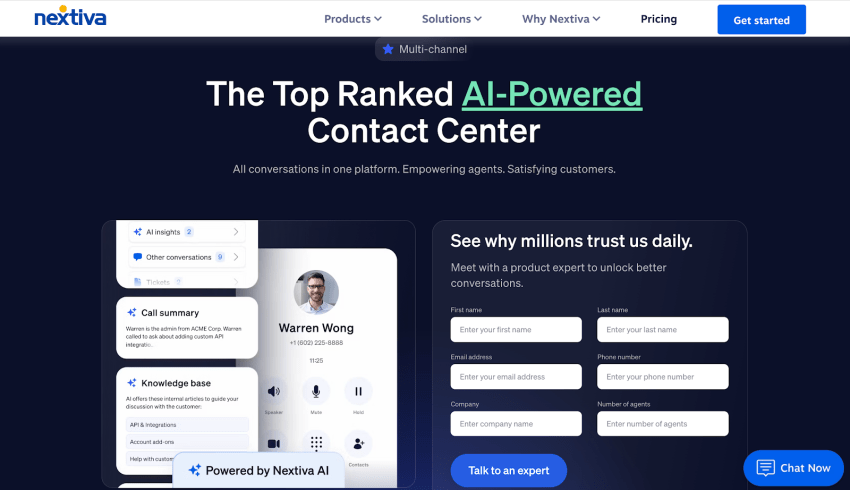
8. Scale with ease
Leverage automation to scale customer support quickly. As your business scales, add new channels to your cloud contact center without increasing headcount at the same pace.
Implement AI-powered chatbots to handle routine queries and use automated ticketing systems to prioritize and route inquiries efficiently, freeing up human agents for more complex issues.
Best Practices for a Successful Omnichannel Customer Engagement Strategy
To make sure your strategy for omnichannel communication is a success, follow these best practice tips:
- Combine data from online, offline, and mobile channels for a complete customer profile, ensuring tailored experiences and instant insights.
- Make sure customers can move with ease between channels—such as website, app, or physical store—without losing context or information.
- Maintain branding, messaging, and service quality on every channel, whether digital or physical, to build trust and loyalty.
- Use customer data and analytics to provide tailored offers, communications, and support.
- Provide instant customer support options via live chat, social media, email, and phone by making sure that interactions are logged and visible to all team members.
- Gather and act on customer feedback across all channels to improve processes, offerings, and satisfaction.
- Train staff for omnichannel technology, workflows and support collaboration across departments to avoid info silos and deliver a satisfying customer journey.
- Track performance across channels with updated metrics, then refine workflows based on what improves the customer experience.
These practices will help you deliver excellent customer experiences that drive engagement, loyalty, and revenue growth.
A Successful Omnichannel Strategy Starts With Nextiva
Omnichannel customer service is more than a nice-to-have strategy. It’s the only way to deliver quick and personalized experiences that meet modern customer expectations.
If you want to adopt omnichannel engagement in your contact center, you need a strategy and the right tools. Nextiva offers advanced customer experience management capabilities, including:
- Time-based alerts to ensure you never miss customer updates
- Post-interaction customer surveys to track sentiment
- Workflow automation to increase productivity
Grow your business with deep customer connections.
Nextiva helps you understand your customers on a whole new level. Track every interaction with your business. Know what works and what doesn’t.

















 Customer Experience
Customer Experience 

